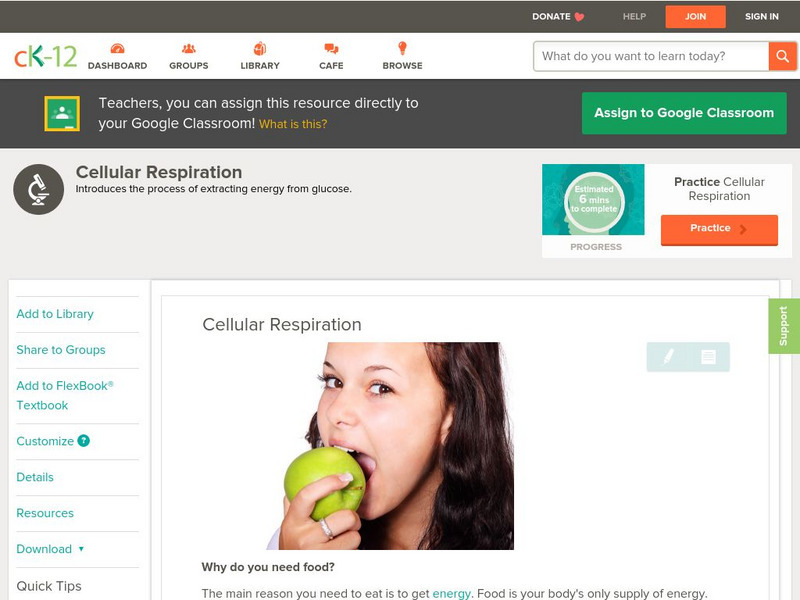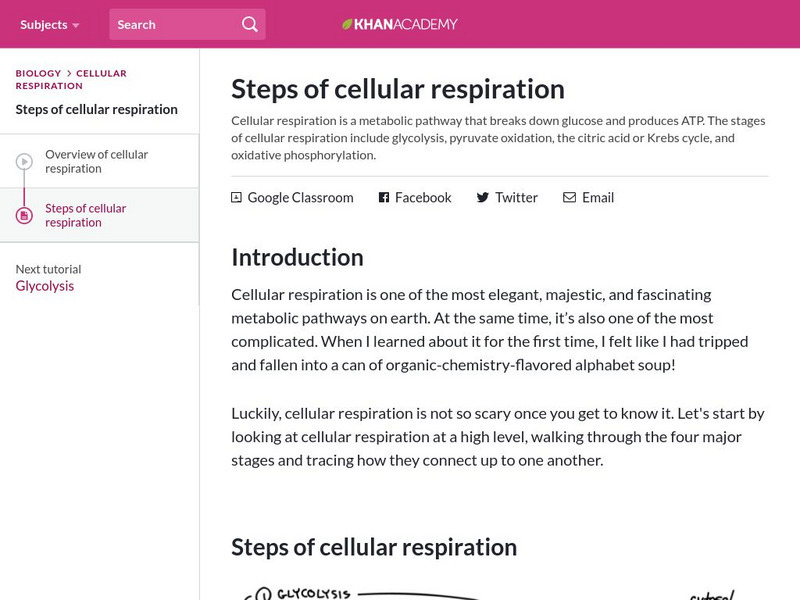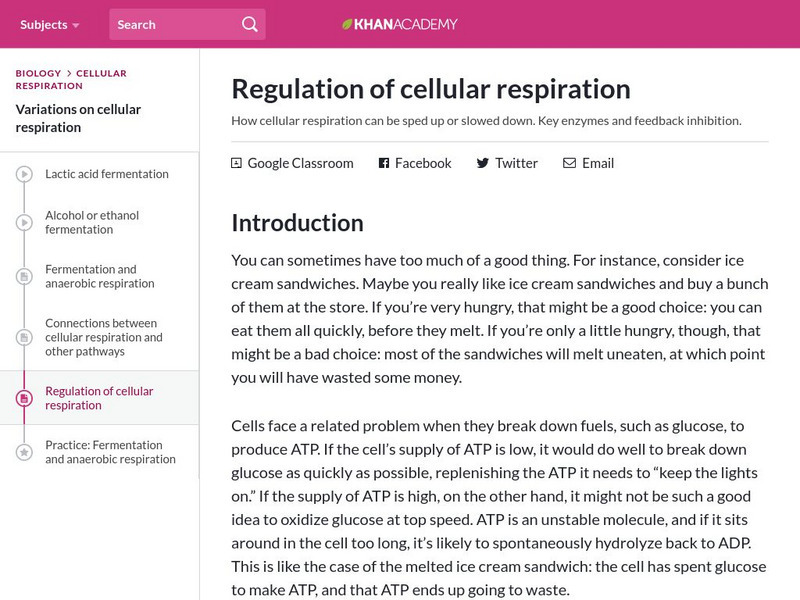Hi, what do you want to do?
Curated OER
Enzyme Lab
Students examine the effects of specific enzymes on samples of liver tissue, muscle tissue (chicken), apples, and potatoes.
Curated OER
Plant Structure, Function and Growth
Students study three structures of a plant as well as their locations and functions. In this botany lesson plan students complete several activities on plant organs and their functions.
Curated OER
Building a Circulation City
Students identify the different organ systems found throughout the human body. Using a model, they explain and draw the flow of blood and name the parts of the circulatory system. They create their own circulation city in which to show...
Curated OER
Human Body Systems
Seventh graders investigate the structure and function of body systems and their inter-relationships. They draw and label the major body systems, observe demonstrations of various body systems, define key vocabulary terms, and compare...
Curated OER
Characteristics of Living Things
Students examine the characteristics of living things. They list the differences between living and non-living things, explore areas around the school, and create a Venn diagram for items found in the school areas.
Curated OER
Water Purification
Students develop an understanding and appreciation of water purification techniques and their implications for health maintenance.
Curated OER
Practice with Ions
In this ions activity, students answer questions about atoms that have gained or lost electrons, they find the number of electrons atoms tend to gain or lose and they answer questions about bonding in atoms. They answer 6 questions about...
Curated OER
Use Concept Maps to Teach the Transfer of Energy
Practical tips, lessons, and ideas for teaching the transfer of energy.
Curated OER
How Sensitive Are The Lungs to Radon?
Students examine the effects of radon on the lungs. They review pictures of the lungs on a large and small scale. They work together to answer questions to complete the lesson.
Curated OER
Kraut Lab
Students explore the process of fermentation through the process of making Sauerkraut. Students use their observational skills and their five senses to create an articulate description of their lab created sauerkraut. They discuss the...
Curated OER
Matrix Reactions
In this matrix reactions worksheet, students fill in the blank about the process of glycolysis. Students also draw an organelle- mitochondrion and label the parts with the given names.
Curated OER
Fungi
Learners study fungi and its parts. In this exploring fungi lesson students fill out a worksheet that includes a diagram of fungi and questions.
Curated OER
Elements Found in Living Things
In this elements instructional activity, students review the most common elements found in living things. Students color in two pictures with the percentages of the elements found in that living thing.
Curated OER
Oxidation Numbers
In this oxidation numbers worksheet, students compare metals and nonmetals, draw Lewis Dot Diagrams, and determine the oxidation number for the given elements. This worksheet has 1 multiple choice, 5 short answer, and 12 fill in the...
Curated OER
Sizing Up the Supersize Croc
Middle schoolers examine and compare traits of humans and crocodiles. In this crocodile instructional activity students use a ratio to estimate the height of a person and compare that to a crocodile.
Savvas Learning
Pearson's the Biology Place: Cell Respiration
This excellent interactive website about cellular respiration provides an overview then goes into the details that can be so difficult to understand. The practice, review, and quiz pages should help solidify understanding.
CK-12 Foundation
Ck 12: Life Science: Cellular Respiration
[Free Registration/Login may be required to access all resource tools.] How does the food you eat provide energy? Through the process of cellular respiration, the energy in food is changed into energy that can be used by the body's...
CK-12 Foundation
Ck 12: Physical Science: Cellular Respiration Reactions
[Free Registration/Login may be required to access all resource tools.] Definition of cellular respiration and its overall chemical equation. The energy changes that occur during cellular respiration, including in photosynthesis.
Khan Academy
Khan Academy: Introduction to Cellular Respiration and Redox
Introduction to redox in cellular respiration. Provides an overview of how cells break down fuels and looks at some of the electron transfer reactions that are key to this process.
Khan Academy
Khan Academy: Connections Between Cellular Respiration and Other Pathways
Resource examines how non-glucose molecules such as carbohydrates, proteins, and lipids enter the cellular respiration pathway. Also, looks at the use of cellular respiration intermediates for biosynthesis.
Khan Academy
Khan Academy: Steps of Cellular Respiration
Resource walks you through the four major stages of cellular respiration which include glycolysis, pyruvate oxidation, the citric acid or Krebs cycle, and oxidative phosphorylation and traces how they connect up to one another.
Khan Academy
Khan Academy: Regulation of Cellular Respiration
This article investigates how cellular respiration can be sped up or slowed down in response to ATP levels and other metabolic signals.
CK-12 Foundation
Ck 12: Life Science: 2.16 Cellular Respiration Process
Explore the specific reactions that happen during the cellular respiration process.
Open Curriculum
Open Curriculum: Powering the Cell: Cellular Respiration and Glycolysis
Students will be able top clarify the relationship between breathing and cellular respiration.




























